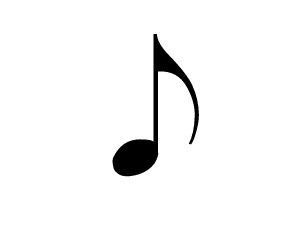

You may be wondering: If the sub-beats are triplets but the main pulse is still a steady 4/4, can't we notate it as 4/4 with triplets everywhere? Of course, you can. But what if you could have the best of both worlds? A steady 4/4 pulse with a 3/4 feel embedded inside? You can! This one, also called waltz-time, has a nice flow to it that breaks the rigidness of 4/4, replacing it with three beats in each measure, which helps make things more fluid. The second most popular time signature is 3/4. It can provide us with a very balanced pulse. So what exactly is it? With each measure consisting of twelve eighth notes, at first sight, 12/8 may look a little scary, but let's take a closer look and see why you'd want to notate things this way.Īs you remember from Part 1, the reason 4/4 has become the most popular time signature is its steadiness and stability.

What is 12/8 time?ġ2/8 is one of the more interesting time signatures that you will find used in pop music.
Highc quarter note series#
If you feel like you need a refresher on the topic, head on over to Part 1 of our series to brush up on the basics, and Part 2 to learn all you need to know about writing songs in 3/4.

We’re assuming you're already familiar with the basics of time signatures, including reading, writing them, and creatively using them in your songs. Part 5: Creating Interesting Motion with Meter Changes.In Part 3 of our “Time Signatures Explained” series, we explore the incredible time signature of 12/8-how it works, who has used it, and how you can apply it to your own songwriting.įor more, check out the other parts of our Time Signatures series:


 0 kommentar(er)
0 kommentar(er)
